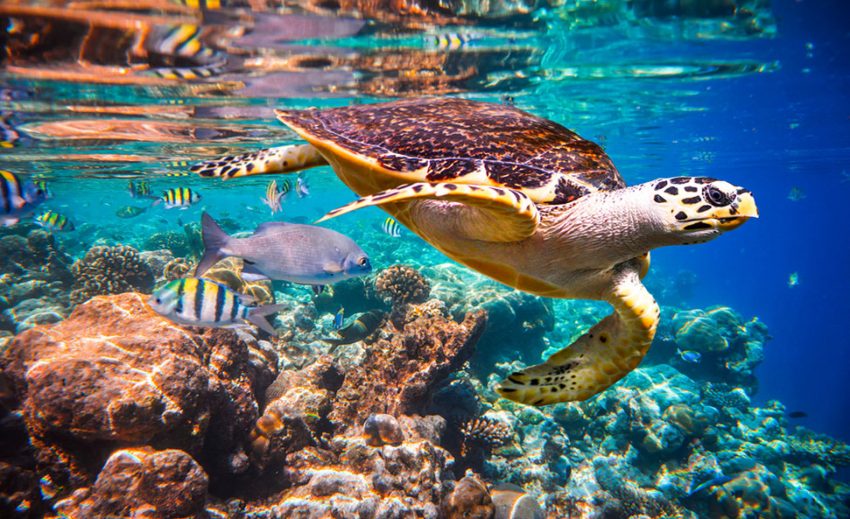Natural ecosystems are a source of wealth and diversity, offering an amazing variety of natural resources and a wonderful biodiversity of species. Conceived as biological systems in which life develops, natural ecosystems play an important role in the overall functioning of the planet Earth. The connections that are established between their biological communities, as well as the characteristics of the climatic phenomena that occur there, allow the development of living beings adapted to a specific ecosystem. The protection and conservation of natural ecosystems is therefore essential, because if we respect the life of natural ecosystems, we are betting on biodiversity and quality of life on Earth.
What is a Natural Ecosystem?
Natural ecosystems are all biological systems that have their own networks of interactions between living beings and nature. They are highly complex systems that have undergone millions of years of evolution, in which the laws of survival and adaptation set the rhythms of their own natural balance.
The constant flows of energy and matter that occur within natural ecosystems have been observed by human beings since the first civilizations, with the aim of deciphering their components and imitating their relationships with the elements of nature.
In the next sections, we will dive into the main characteristics of natural ecosystems, as well as the different types of ecosystems that exist in order to learn how to differentiate them.
Characteristics of Natural Ecosystems

Below, we will see in more details what are the main components and characteristics that are essential for the proper functioning and optimal balance of natural ecosystems.
– They are made up of biotic (living beings) and abiotic (soil, rocks, climatic factors) components.
– Within them there are intraspecific relationships or between individuals of the same species, interspecific relationships or between individuals of different species and biological communities, as well as relationships between these communities of organisms and the environment in which they live, also called biotope.
– There are constant flows of matter and energy within natural ecosystems, which allow an ecological succession of the communities of organisms that compose them.
– Natural ecosystems maintain optimal balances between the living beings and the environment that constitute them.
Based on these common characteristics, it is possible to differentiate the existence of different types of natural ecosystems according to their climatic characteristics, as well as the biological communities that constitute them.
Examples of Natural Ecosystems
Now that we know the definition of a natural ecosystem and its characteristics, below are some examples of the most amazing natural ecosystems that exist on Earth:
– Amazon Rainforest
– The Atacama Desert
– Australian Great Barrier Reef
– The moors of the Colombian mountains
– The coastal mangroves of Brazil
– Taiga or coniferous forest of Canada
– Alpine meadow
– Indlandsis of Antarctica
– Marismas of Doñana
Types of Ecosystems
A general classification allows us to distinguish between two main types of ecosystems: natural ecosystems and anthropogenic, artificial or non-natural ecosystems, i.e. those that have been created and designed by man. Within these two broad types of ecosystems, there are different subgroups, which are detailed below in the complete list of ecosystem types:
Natural Ecosystems

– Terrestrial ecosystems: deserts, tropical grasslands (steppes, grasslands and prairies), savannas, jungles, tundras and temperate forests.
– Aquatic ecosystems: lakes, rivers, springs and streams, oceans, seas, reefs, shallow coastal waters, estuaries and coastal saltwater lagoons.
– Air ecosystem: any area that combines land and air or sea and air.
– Mixed ecosystems: these are those that combine water and land, such as wetlands, mangroves, marshes and coasts.
Artificial Ecosystems
– Agricultural or livestock ecosystems.
– Dam or reservoir ecosystems.
– Urban and rural ecosystems.
Difference Between Natural and Man-Made Ecosystems
Natural ecosystems have filled the planet with life for millions of years. However, as humans have evolved, these natural ecosystems have been modified and altered, sometimes forming new, completely artificial ecosystems.
These artificial or anthropic ecosystems are made up of modified landscapes and interspecific relationships in which humans are the most abundant species. We can therefore say that they are humanized ecosystems, in which the flows of matter and energy, as well as the relationships and the overall balance of the ecosystem are determined according to the needs and characteristics of people’s lives, in contrast to the rhythms followed by natural ecosystems, in which each and every group of organisms interacts in unison to promote the natural balance of the system.
Here you go! You now know more about the ecosystems and the different ones that exist. On a personal note, which one do you prefer? Natural or Artificial ones? Share your thoughts in the comments below.

